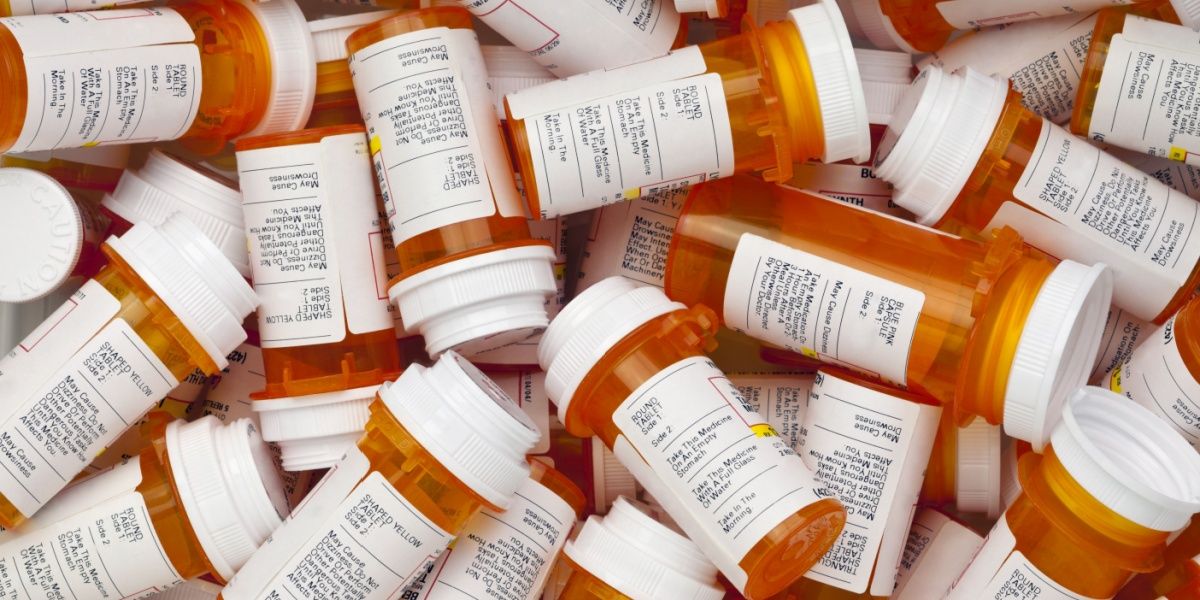Primidone is a medication used to treat epilepsy and essential tremors. Although it is often not the first-line medication used by clinicians, it has the potential to treat seizures that are resistant to other types of anticonvulsant medicines.
This article will examine the indications, risks, and safety considerations associated with taking primidone.
- Primidone is an anticonvulsant medication used for the treatment of epilepsy and essential tremor. Physicians will start by prescribing a low dose and then gradually increase it depending on your response.
- Common side effects include sedation, drowsiness, apathy, movement disorders, nausea, nystagmus (abnormal rapid eye movements), and visual changes.
- There is a low risk of dependence and addiction when primidone is taken as prescribed. However, care should still be taken, and primidone should never be stopped suddenly due to potentially serious withdrawal effects.

Introduction: What is Primidone?
Primodone, sold under the brand name Mysoline, is an anticonvulsant medication. This means that it is designed to prevent seizures in people with epilepsy. Primidone has been shown to be effective in managing: [1][2]
- Focal onset aware seizures: Starting in one side of the brain, these seizures do not cause you to lose awareness. They may cause a strange feeling and result in abnormal movements.
- Focal impaired awareness seizures: Also starting in one side of the brain, these seizures do cause a loss of awareness, leaving the individual confused or dazed. This seizure type may also cause abnormal movements.
- Generalized motor seizures: These affect widespread brain function, causing the person to lose awareness and experience abnormal muscle jerking, spasms, or shaking throughout the body.
Primidone has also been approved for the treatment of essential tremor, a common movement disorder characterized by a rapid, fine tremor in the hands and forearms. [3]
The only seizure type for which primidone is not currently recommended is typical absence seizures.
How primidone works: Mechanism of action
The exact way in which primidone works in the body is unknown. However, researchers believe that primidone acts on multiple nervous system pathways to reduce the over-excitability of nerves that is responsible for seizures in people with epilepsy. [1] Primidone is also broken down in the body into various compounds with important anticonvulsive activities. Phenobarbital is one such compound that interacts with GABA receptors, stabilizing nerve signalling and reducing the ‘seizure threshold’. [4]
Primidone dosage and administration
Primidone dosing is guided by two key factors: response to the current dose and the condition for which it is being prescribed.
The recommended dose of primidone for adults with epilepsy is 250mg to be taken three to four times a day. Physicians will start by prescribing a very low dose (100 to 125mg once a day), increasing the dose and frequency every three days. If seizures are still not adequately controlled, the dose may be increased up to a maximum of 2g daily (split over four evenly spaced doses). [1]
Essential tremor is generally treated at a much lower dose, typically 50 to 250 mg once a day at bedtime. Again, your doctor will initially start at a very low dose (12.5 to 25 mg daily), increasing slowly based on your response. The maximum daily dose that can be given is 750mg, divided throughout the day so that no single dose exceeds 250mg. [1]
In both conditions, the smallest possible dose able to control symptoms is used to minimize the risk of adverse effects.
Side effects and risks
As with any medication, primidone usage comes with side effects and risks that it is vital to be aware of. Common side effects include: [1][5]
- Sedation and drowsiness
- Apathy (feeling a lack of interest)
- Movement disorders
- Nausea
- Nystagmus (abnormal rapid eye movements)
- Visual changes
Uncommon side effects include: [1][5]
- Dizziness
- Headache
- Allergic reactions
- Skin reactions
- Abdominal pain
- Vomiting
- Low mood and suicidal thoughts
In rare cases, individuals may experience a severe drop in white blood cell or platelet count, requiring urgent medical attention. Long-term use of any barbiturate medication (including primidone) is also associated with a risk of folate deficiency, as well as connective tissue and bone disorders. For this reason, people who take primidone should have a blood test every 6 months. [1]
It is important to report any side effects to your healthcare provider. Seek urgent medical attention if you experience any signs of an allergic reaction, sedation that impacts your breathing or ability to stay awake, or thoughts of suicide.
Dependence and withdrawal
There is no evidence to suggest that primidone poses a significant risk of dependence when taken as prescribed for the treatment of epilepsy or essential tremor. [6] However, we do know that other barbiturate-type medications have a risk of physical and psychological dependence, so it’s worth exercising the same level of caution when taking primidone. Withdrawal from barbiturates can cause: [7]
- Muscle weakness
- Low blood pressure
- Nausea
- Sleeplessness
- Seizures
- Fever
- Psychotic reactions (including delirium or schizophrenic symptoms)
- Coma and death (in severe cases)
Always remember, you should never stop taking primidone suddenly or reduce the dose without consulting your healthcare provider first, as this can significantly increase your risk of seizures and other adverse effects. [1]
Addiction and abuse potential
There is an absence of case reports to indicate that primidone has a significant addiction potential or is abused recreationally. However, we do know that other barbiturates are abused for their sedative effects. For this reason, primidone prescription is contraindicated in people suffering from alcohol or drug dependence. [1]
Managing primidone use safely
Primidone is considered a safe medication when taken as prescribed, with potential adverse effects being closely monitored. If you are concerned about your use of primidone or are experiencing troublesome side effects, speak to your healthcare provider.
Physicians will take extra precautions when prescribing primidone in specific patient groups: [1]
- Liver impairment: prescribed with caution
- Kidney impairment: dose reduced based on kidney function
- Pregnancy: risks vs. benefits will be weighed due to an increased risk of folic acid and vitamin K deficiency, as well as a rare increased risk of birth defects
- Breastfeeding: used with caution due to the potential risk of sedation in the baby
- Pediatric patients: a reduced dose based on weight
Alternative medications
Several other anticonvulsant medications are available that may be prescribed in place of or in addition to primidone. Common anticonvulsants include: [8]
- Carbamazepine
- Oxycarbazepine
- Phenytoin
- Lacosamide
- Phenobarbital
- Vigabatrin
- Topiramate
- Valproate
- Levetiracetam
Essential tremor is more commonly treated with a medication called propranolol. It is generally considered safer with fewer side effects than primidone. [3]
What to do in case of overdose or withdrawal
If you have taken more primidone than prescribed, you may experience symptoms such as sedation, slowed breathing, low blood pressure, or even loss of consciousness. You must seek emergency medical help as soon as possible. You will need to be closely monitored in the hospital and may require intensive care support. [1]
Sudden primidone withdrawal can also be life-threatening, so any dose reduction must be done slowly under the supervision of your physician. If you do experience any symptoms of withdrawal, seek immediate medical attention. [1]
Support and resources for primidone addiction
If you are concerned about your primidone usage, urgently contact your healthcare provider. More information about barbiturate addiction is available from the Substance Abuse and Mental Health Services Administration via their website or free confidential helpline.
For information about treatment services available near you, visit our rehabilitation directory.


-guide-detail.jpg?v=1722502337)
-guide-detail.jpg?v=1722502591)
